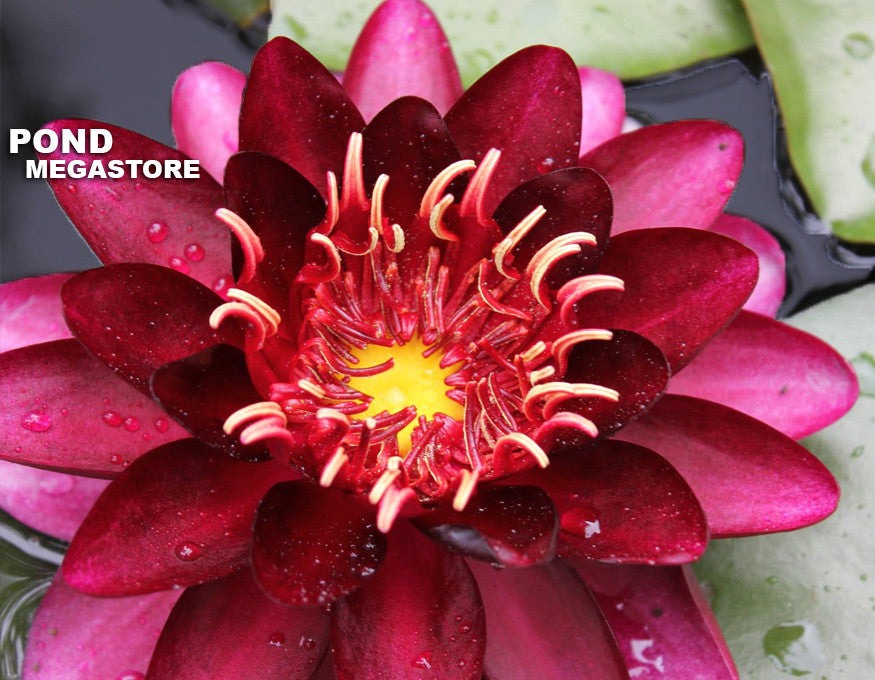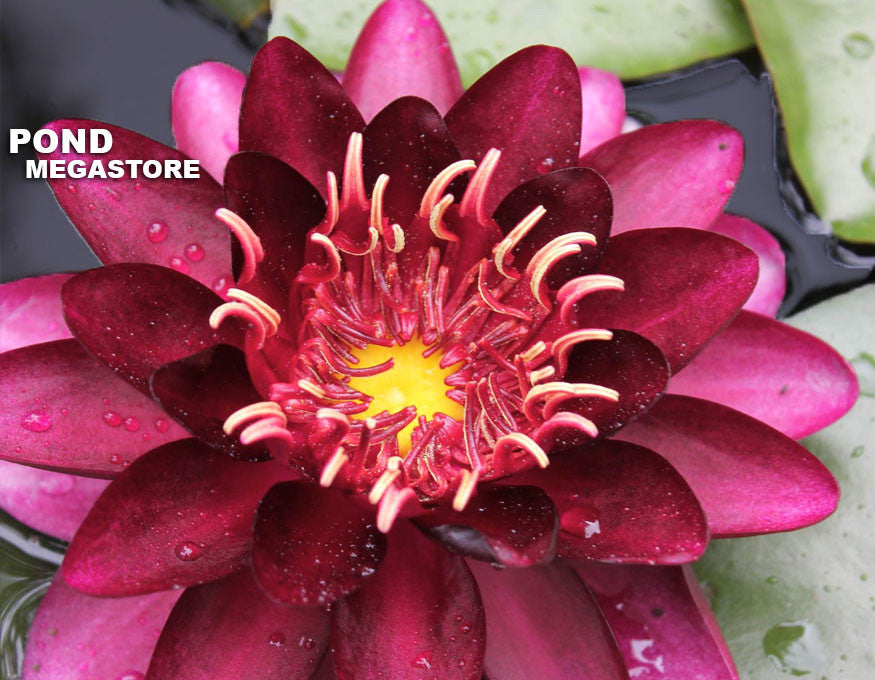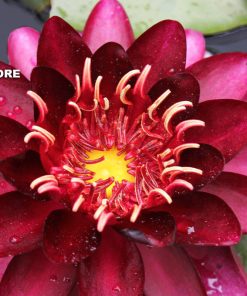Almost Black WaterlilyWholesale Quantity Pond Megastore
$ 30,00 $ 18,00
Plant description
Almost Black Hardy Waterlily adds drama and intrigue to your water garden setting.
This dark-red waterlily bloom is exotic and exceptional. The outer petals are dark red, and the inner petals are darker red to burgundy, having an almost luminescent quality.
The dark green pads perfectly complement these splendid flowers.
This is a medium-large waterlily and is a great addition to medium to large ponds.
Planting instructions
Plant in a large (2 – 7 gallon ) or larger container using heavy loam soil and place 6 – 24 inches beneath the water’s surface in full sun.
Fertilizing Instructions
Fertilize with Waterlily World Fertilizer Tabs + Humates, for optimum growth and best blooming every 2-3 weeks through spring and summer!
Use 3 to 4 tablets for water lilies every two weeks; we suggest the 1st and 15th of each month for optimal and continuous flowering until fall! Remember, lilies also like full, direct, unobstructed sunlight as much of the day as possible and regular dividing at the root as needed. Any cramped pots will lessen the blooming of waterlilies. A 15″ fabric aquatic growpot with handles is suggested for any medium or large waterlily. The 7.5-inch pots are okay for up to 8 months of growth for smaller waterlilies.
PondGro Aquatic Soil is perfect for those who do not have access to plain good topsoil for their waterlilies. We never suggest aquatic planting media, pea gravel, or other stones for pond plants. You will end up with lots of mortality and plants that never perform. Only plain sifted Topsoil should ever be used for waterlilies; it can have a heavy sand base or clay base but should not include organic compost, so never buy anything bagged as that always has compost added, which floats and rots.
For in-ground ponds with no liner, these, again, prefer full sun. Best anchored into the embankment soil just 6 to 10 inches below the waterline when planted. Consider temporary fencing for 6 to 10 weeks when establishing in existing ponds with wildlife so that plants can get ahead of any plant predators like raccoons, turtles, etc.
Speedy Delivery and Professional Packaging
We can offer a variety of shipping options due to our long-term relationship with UPS FedEx DHL. Our warehouse staff are highly trained and will pack the items according to our exact and precise specifications. Your products will be subjected to an extensive inspection and be securely packaged before being delivered. We ship to hundreds of thousands of customers daily across various countries. This is an indication of our determination to become the largest online retailer worldwide. Warehouses and distribution centres can be located in Europe as well as in the USA.
Orders with more than one item are assigned processing periods according to each item.
Prior to shipment, we examine the items ordered carefully before shipping. Most orders are shipped within 48 hours. It is expected that delivery will take between 3 and 7 days.
Returns
We do not manage the stock in our factory and warehouse. So the actual stock may change at any time. Please be aware that it's possible that your order will run out of stock even after you have made the order.
Our policy runs for a period of 30 days. If thirty days have passed from the date you purchased the item, we cannot provide a refund or exchange.
The item must not be used, and it must be in the original packaging. You must have the item in the original packaging.
Related products
Hardy Water Lily
Hardy Water Lily
Citrus Twist Waterlily Small-Medium Hardy Water Lily Pond Megastore
Hardy Water Lily
Hardy Water Lily
Maha TreasureNEW Hardy Waterlily! Very Good Bloomer! Pond Megastore
Hardy Water Lily
Reine Du Ball Bell of the Ball Winter Hardy Waterlily Pond Megastore
Hardy Water Lily
Grower Choice Hardy Waterlily Collection Huge Savings on Excellent Varieites Pond Megastore
Hardy Water Lily
Perry’s Double Yellow Water Lily Extra Large Hardy Water Lily One of our Top picks! Pond Megastore
Hardy Water Lily
“Fragrance & Fortune”, Top 5 Hardy Waterlily Very fragrant, Heavy Blooming! Pond Megastore
Hardy Water Lily
Hardy Water Lily
Hardy Water Lily
Hardy Water Lily
James Brydon Water Lily Medium Hardy Water Lily Pond Megastore
Hardy Water Lily
Hardy Water Lily
Hardy Water Lily
Hardy Water Lily
Hardy Water Lily
Hardy Water Lily
Andreana Waterlily Small-Medium Heavy Bloomer! Pond Megastore
Hardy Water Lily
Hardy Water Lily
Hardy Water Lily
Vanilla Milkshake Top Blooming, Large Waterlily Pond Megastore
Hardy Water Lily
Odorata Hardy Waterlily ‘American White Waterlily’ THIS SHIPS IN SPRING & SUMMER UNAVAILABLE
Hardy Water Lily
























































